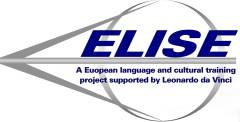
Summary of Danish ELISE survey
Background
The aim of this project is to extend the scope of the EU project ELUCIDATE under the Leonardo da Vinci Programme to other countries which were not covered by the ELUCIDATE project. In the ELUCIDATE project France, Germany, Spain and England were included and the studies were carried out between 1994 and 1997. A predecessor to the ELUCIDATE project was the ‘Flair’ project which took place in 1992 and 1993 in Southern Denmark; the Basque Country, Spain; South Western Germany; the Northern Netherlands; and the North of England.
The purpose of this ELISE survey is to analyse the knowledge of foreign languages and cultural background in exporting companies in Denmark. The same analysis is simultaneously taking place in other European countries, Ireland (North and South), Scotland, Sweden and the Netherlands. The analysis is based on a survey among selected Danish exporting companies.
Main issues
The Danish language is only spoken by about 5 million people, but a large part of the population of the other Scandinavian countries understand Danish. Therefore, in order to be able to communicate with foreign countries, knowledge of other languages is indeed required. English and German are normally mandatory for every pupil in schools nowadays.
General exporting position
Denmark exports to most of the world. Its exporting position varies from industry to industry. This survey has been based on a questionnaire which was sent out to 906 Danish exporting companies within the following industries: clothing, food, electronics, telecommunications, steel, plastic, building, and pharmaceutical industries. 52 companies replied, and their answers form the basis of this survey.
Profile of companies
Each of the chosen sectors has a least generated one questionnaire each and the companies are from all over Denmark. The companies of this survey represent small and medium sized companies with a turnover from less than 2m EUROs to more than 20m EUROs. Most of the companies are independent Danish companies with an export activity between 50- 100 %, mostly concentrated in Europe.
Current use of foreign languages
The results of the survey show that the most used and most important languages for Danish export companies are English, German, French, Swedish, and Spanish. The use of Swedish can be explained by the fact that Sweden is a neighbour country to Denmark and belongs to one of the large export markets for Danish companies. The use of other languages can be explained by the fact that these are the most used languages in the world when trading.
The survey shows that Danish export companies have a very high percentage of employed staff with language skills, 88,5%.
Language and cultural barriers
The survey shows that Danish exporters are well equipped for communicating with foreign countries. Only 28,8% of the companies state that they have encountered language barriers for different reasons.
37% of the companies have experienced cultural barriers, especially in Japan, the Far East, the Middle East and Africa. Cultural barriers are however, also met in Europe in countries like Germany, France and the Scandinavian countries.
Only 6% of the sample recognise that they have lost business due to language and cultural barriers.
Language training
All companies emphasise the importance of language skills when employing new staff, but only 56% of the companies have undertaken language training within the last 3 years. The training mainly covers English and German.
However, 62% of the companies plan to undertake training within the next 3 years. The forthcoming training can be seen as a consequence of entering new markets, or improving existing skills.
Modern language tools
The survey shows that many companies use or will use modern language tools in connection with their work. Electronic dictionaries is the most popular tool followed by terminology databases while translation memories and machine translation are products which the companies do not use to very much, but many envisage to use it.
Language strategies
42,3% of the companies in the survey have implemented a language strategy:
- all directions must be in Danish and English
- all documentation, minutes etc. must be in English
- all communication with contacts must be in English or German
- all subsidiary companies abroad communicate with contacts in the local language
- all employees must be able to manage in English in speaking and writing
- all written material for customers must be checked by a language employee before leaving the company
- the must of using local agents in order be more successful in doing business
Future demands
50% of the companies plan to begin trading with countries with a new foreign language, and new languages will therefore be needed.
|

